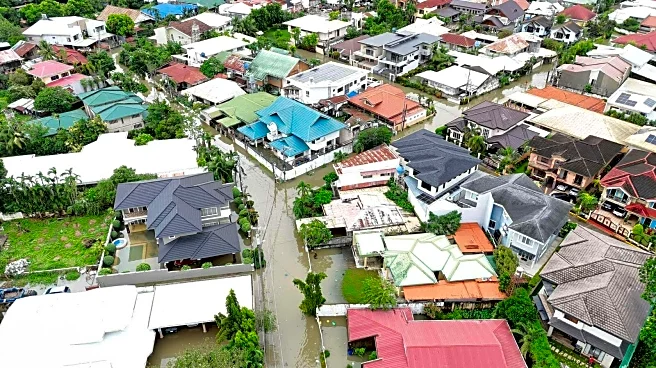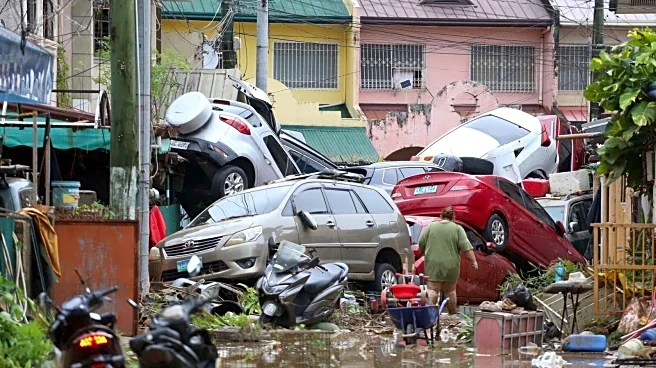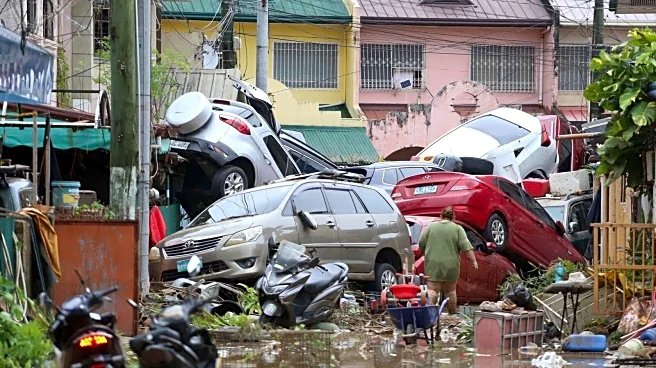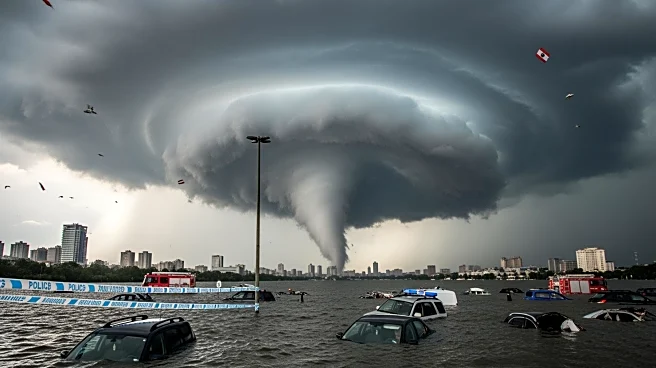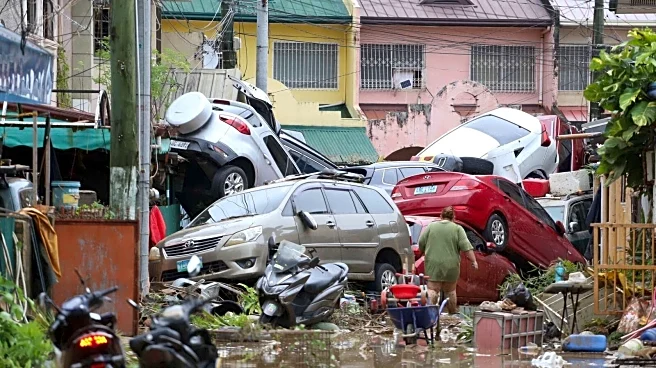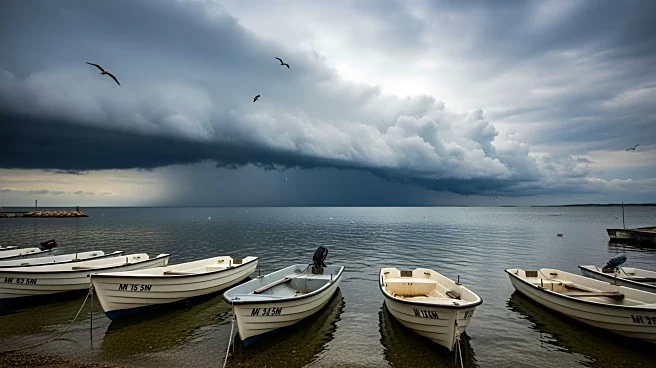What's Happening?
Typhoon Kalmaegi has caused significant devastation in the central Philippines, resulting in over 40 fatalities and displacing hundreds of thousands of residents. The island of Cebu has been particularly
affected, with entire towns submerged and vehicles swept away by floodwaters. The typhoon brought unprecedented rainfall, exceeding the monthly average in just 24 hours. Local officials have reported ongoing evacuations and rescue operations as the storm continues to move westward, albeit with slightly reduced intensity. The Philippines, which experiences an average of 20 storms annually, has already reached this average with Kalmaegi, and more storms are anticipated before the year's end.
Why It's Important?
The impact of Typhoon Kalmaegi underscores the increasing frequency and intensity of storms in the region, attributed to climate change. The severe weather events pose significant challenges for disaster management and highlight the vulnerability of communities living in poverty-stricken areas. The economic and social repercussions are profound, with infrastructure damage, loss of life, and displacement of populations. The situation calls for enhanced disaster preparedness and climate adaptation strategies to mitigate future risks and protect vulnerable populations.
What's Next?
As the typhoon continues its path, further evacuations and relief efforts are expected. The Philippine government and international aid organizations will likely intensify their response to address immediate needs and begin recovery efforts. The ongoing threat of additional storms necessitates continuous monitoring and preparedness measures. The recent helicopter crash during relief operations also highlights the risks faced by responders in such challenging conditions.




